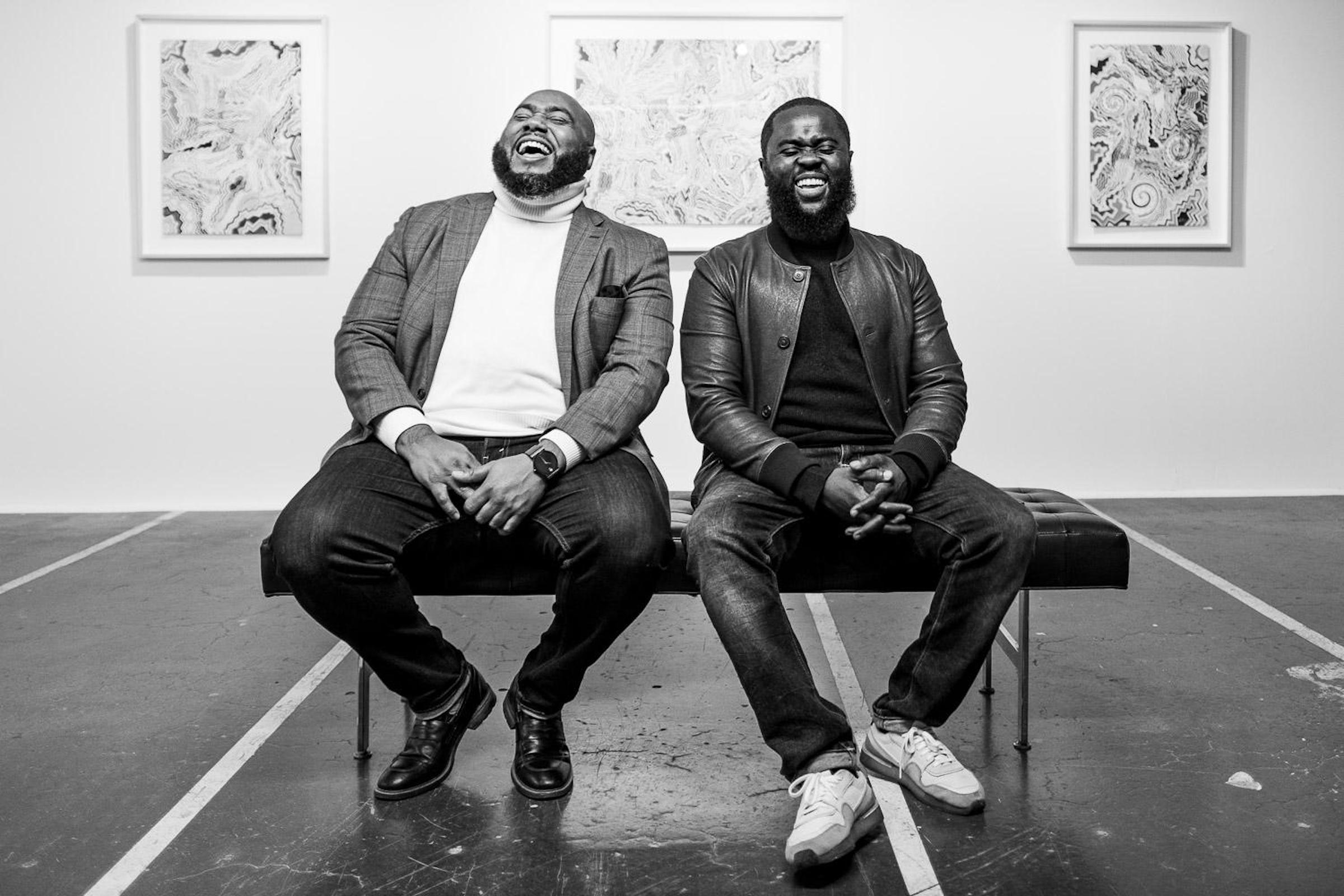
[ad_1]
In the old Pfizer factory building at the edge of Bedford-Stuyvesant and Broadway Triangle in Brooklyn, The Bishop Gallery’s first-floor space comfortably bridges the gaps between access, authenticity, and ambition in the art world. Led by Brooklyn residents and long-time best friends Stevenson Dunn Jr. and Erwin John and named after their educational mentor Dr. Lamont Bishop, the gallery prides itself on being a resource for artists and the local community alike in its commitment to underrepresented perspectives.
Dunn Jr. and John serendipitously pivoted toward the arts without any background in it. In an interview with Hyperallergic, they joked that opening the gallery in its initial Washington, DC, location about 15 years ago was akin to “building a plane in the sky” and described the experience as the pinnacle of learning on the job. But they fell in love with exhibiting art, and as they took classes with experts at universities in the area and forged connections with gallerists, curators, and other professionals, they began to embrace “being students of the game.”
Now, their aim is to not only meet the material needs of the artists they work with but also to ensure that the community they serve is integrated into the creative hub.
“Growing up in Brooklyn, we hadn’t visited many galleries or museums ourselves and know many people who, to this day, haven’t done so either for one reason or another,” said John. “So bringing artists from six of seven continents right here to our community where they feel welcome, and also giving people a chance to feel like the art they’re seeing really belongs to them, is critical to us.”

The pair started out exhibiting works by emerging artists but evolved over the years to also work with more established artists and represent private collections and even estates, including that of Yenovk Der Hagopian, an Armenian-American painter, sculptor, and musician who survived the Armenian Genocide. Since the onset of the pandemic, The Bishop Gallery has offered artist residencies with accommodations, stipends, and excursions.
John and Dunn Jr. specified that while The Bishop is a Black-owned gallery, its program is not strictly focused on “conserving only our history and culture over time.”
“We like telling stories, and those stories are not always our own,” Dunn Jr. said. “We’re just a vessel to tell those kinds of authentic stories.”

The story being told at The Bishop right now is that of “unabashed feminine freedom” through the group exhibition Sula Playing in the Dark, based on the titular character who rejects societal expectations and marches to the beat of her own drum in Toni Morrison’s 1973 novel Sula. In the book, the character’s dismissal of rules, norms, and the status quo wreaks havoc in the community she hails from and her relationships with others. The show, on view from June 8 through July 27 and curated by Margarita Lila Rosa, who is part of the Studio Museum’s current Arts Leadership Cohort, opens space for women and nonbinary artists on the margin of society to explore playfulness and freedom through their practices.
An independent curator, Rosa said that the show is about “stepping into the avant-garde and camp aesthetics to enable women and nonbinary artists to feel completely free in their expression.”
“Our goal is to bring an experiential installation as opposed to just a gallery show, which we accomplished through integrating literature with fine arts,” she told Hyperallergic.

The exhibition’s multi- and mixed-media approach covers topics including race, sex work and nightlife, folklore and world-building, identity in the era of the internet, and faith’s constraints on femininity through the lens of specific sections of Morrison’s novel — namely discussions between Sula and her straight-laced friend Nel. From woven tapestries, soft sculptures, and enormous paper collages to digital paintings and the special inclusion of the Pepper’s Ghost illusion of a pole dance routine, the 10 included artists don’t hold back in their explorations of self through material.
Dunn Jr. said Rosa brings a breath of fresh air to the gallery. “We work with all types of institutions, and when it comes to that type of work, you have to play the game a little bit to maintain longevity by adhering to certain limitations,” he noted. “Here, we’re able to engage with independent curators who don’t have those types of attachments and push boundaries without conceding to what a board might think.”



[ad_2]